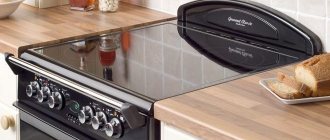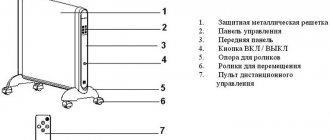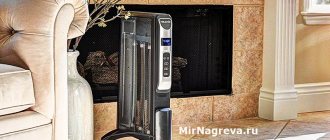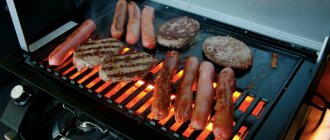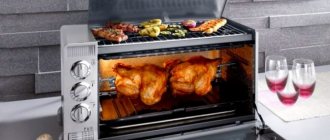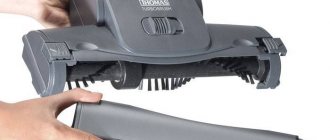Diesel fuel, popularly known as diesel fuel, may well compete with other energy sources.
The liquid diesel fuel heater can be used for heating a private house, greenhouse, garage, pavilion, poultry house, farmstead, warehouse and others.
It will consume more money than natural gas, but less than electricity.
Let's compare the characteristics of different types of solar heaters, consider the pros and cons, as well as the features of choice and price.
Where can it be used
Regardless of the type of fuel (diesel or gasoline), all catalytic heating devices have one important advantage - they can work for a very long time and are not controlled by humans. This means that such heat sources are fire and explosion-proof and can be used in everyday life.
Also, such stoves will find their use in garages, warehouses and workshops, in cabins and construction sites, and will heat a greenhouse, cottage or country house.
Mobile models are indispensable when camping - for heating tents and heating food. A gasoline portable heater is familiar to any traveler.
Where are they used?
Regardless of what type of fuel is used in heaters, all devices have one important advantage. They are able to work for quite a long time, without human participation and control.
As you already understand, heaters running on diesel fuel will be an excellent help in a greenhouse or garage. With their help, you can effectively heat a warehouse or industrial space. Portable, non-volatile models are convenient to take with you to the forest or fishing. With their help, you can not only heat your tent, but also quickly prepare hot food.
Infrared diesel heaters are successfully used on open verandas and work sites.
And of course, with the help of such devices you can effectively heat a dacha or a small country house. See also –
Are infrared heaters harmful to health or not?
Common types
Forced air heating devices are widely used. Thermal energy in them is created due to the combustion of diesel fuel. This heat is used to heat the metal or ceramic element, and when the fan is turned on, warm air begins to circulate and warm up the room. They are best used in large rooms, without air flow and drafts. Such heaters are very effective and inexpensive.
Infrared diesel heaters. Infrared radiation is similar to solar radiation; it warms up objects and people first, and then the air. Infrared heaters using diesel fuel are also installed. An important advantage of this type of heating is the instant heating of objects located close to it. The devices are well suited for rooms with drafts.
Diesel infrared heat sources consume electricity very economically, and by connecting a generator, you can create your own autonomous heating.
Due to the fact that diesel fuel burns completely, such devices do not require smoke removal. They are often installed outdoors and in street cafes. The disadvantage of such heat sources is their inability to warm large rooms.
If we compare air and infrared types of devices, the first is significantly inferior to the second, since it dries out the air in the room quite strongly.
Diesel heating boilers operate on the same principle as turbocharged gas appliances. Their similarity is also in easy control using electronics in automatic mode.
Compact appliances – a kind of potbelly stove with a fan – are very popular on the market. They come in 2 types:
- with direct heating (without chimney);
- with indirect heating.
The operating principle of a potbelly stove with indirect heating is very simple. Liquid fuel enters the combustion chamber, where it is burned thanks to the air supplied by the fan. Passing the heat exchanger, warm air rushes into the room, heating it throughout the entire area. This heating device is very often used in garages. The design of heating devices allows you to: control the fuel consumed and regulate the temperature.
Basically, all modern diesel stoves have a flame control system, which means that if the device overheats, it will automatically turn off.
Models and prices
Diesel heaters are not the cheapest equipment. The price is directly proportional to their power.
The simplest of the diesel family are Solar Gases. These are mobile devices, their power and size are slightly different.
Thus, “Savo PO-2.5” with a consumption of 200 g per hour produces 2.5 kW of power and can operate on a full charge for up to 18 hours. There is a cooking panel. Average price – 2700 rub.
Infrared heaters sometimes cost as much as a full-fledged heating boiler (30 – 100 thousand rubles). Example: “MasterYard MH 21R”. With a flow rate of 2 liters per hour, it produces 20.5 kW, 15 liter tank. Price – 33 thousand rubles.
Heat guns can have a power from 5 kW to 40 kW or more. Example: “Aurora Diesel Heat” 15 kW At a flow rate of 1.4 l/hour. 20 liter tank. Price 19 thousand rubles.
The power consumption of the gun fan is no more than 100 W. If you need to make autonomous heating, you can compensate for this consumption with a small solar panel.
Types of autonomous diesel fuel heaters
To begin with, we list all the types of heating devices that use liquid fuel and are most often used by users:
- mini-ovens “Solyarogaz” with a power of 1.8-5 kW from the Russian brand Savo and their analogues;
- various diesel fuel heaters with forced air supply, also known as heat guns;
- a simple direct combustion stove for a garage is one of the most popular home-made designs;
- stove - dropper.
Diesel industrial air heater
Note. The first 2 types of diesel fuel heaters are produced in factories and can be purchased ready-made. The remaining two heaters function equally well on diesel fuel and waste oil, but they must be made independently.
Now we will consider the heating units separately and identify all the positive and negative aspects of their operation.
Review of the miracle diesel stove from Savo
Where such a catchy name came from is unknown. Most likely, it was invented by marketers promoting this product on the market. In fact, the miracle stove, powered by diesel fuel and kerosene, is a modernized descendant of kerosene gas, which was used during Soviet times for cooking. The operating principle is as follows:
- After opening the control valve, the fuel from the tank independently flows into the bowl, where the ends of two fabric wicks are immersed.
- Then the law of capillary rise of liquid operates, due to which the wicks wound on the burner are thoroughly saturated with diesel fuel.
- 2-3 minutes after impregnation, the burner is ignited with matches or a lighter. The operating mode is reached within 10 minutes.
- To turn off the diesel burner, you must close the fuel valve. The heating stove will completely go out in 6-10 minutes, when the diesel fuel that has soaked the wicks burns out.
The design and principle of operation of the miracle furnace burner
For reference. According to the operating instructions for this diesel fuel stove, the fuel supply valve must be closed during heating to prevent an open flame. When the top of the burner glows red and glows red, the valve opens again by 2-3 turns.
Heating devices "Solyarogaz" (Ukrainian equivalent - "Motor Sich") can boast the following real advantages:
- Acceptable price. Mini-stove PO-1.8 (power 1.8 kW) retail costs about 37 USD. e., and the price of a 5-kilowatt heater is 95 USD. e.
- Mobility due to small dimensions and low weight. The weight of the same 1.8 kW diesel-kerosene heating stove is 5.6 kg.
- Economical. If you believe the passport, then miracle diesel stoves with a heat output of 1.8-2.5 kW consume about 200 ml of diesel fuel in 1 hour. Judging by the reviews, real fuel consumption is practically no different from the rated one.
- Again, judging by user reviews (read in the next section), the stove does an excellent job of heating small rooms, even poorly insulated ones.
- The product is intended not only for heating, but also for cooking (a steel mesh is installed above the burner).
Miracle stove in operation
Let's move on to a few fly in the ointment. The first is inertia, which manifests itself during ignition, shutdown and adjustment of combustion intensity. As noted above, warming up and extinguishing the burner takes 6-10 minutes, and a change in the flame is observed 20-35 seconds after turning the tap, so you need to get used to the stove.
Which heater is better for a summer house?
For a summer residence, an infrared gas heater is best. It can also be used for cooking like a stove.
In the country, heaters are used even when there is a stationary heating system. After all, it is not always convenient to start a circuit, for example, when you arrive at the dacha for just a couple of hours. In this case, dacha heaters will instantly warm you up. Which ones are best told by both reviews and situation analysis. If there is no water heating, then you need to choose heaters that will create the most comfortable conditions for being in the room, and will be able to do this for a long period. What should you do when choosing heaters for your home? Which heaters work best and do not harm people?
In any case, it is better to focus on autonomous units. These include devices:
- on gas;
- on liquid fuel (diesel, gasoline).
Gas heaters for a country house. Which are better: infrared or those that heat the air? In infrared units, the temperature of the heating element reaches almost 1 thousand degrees. They become red-hot and emit a dim glow, like a 10-watt light bulb. They instantly begin to heat everything that falls under the IR rays, except for the air, of course. Thus, if you stand in such a way as to be in the zone of infrared radiation, you will immediately become warm.
The second type of gas heaters heats the air. Heat is released as a result of catalytic combustion, that is, the oxidation of gas by metal catalysts. There is no smoke, no soot, no smell of gas. Such devices are used not only by summer residents, but also by tourists to heat tents. At the same time, the time during which you can feel the influx of heat will increase, since all the air in the room must warm up.
It's a different matter when it comes to constant heating. In this case, the above units will not be suitable. They all burn oxygen and the room needs constant ventilation. Thus, cold air will constantly be released, the temperature will drop, and the heater will need to be turned on again. And so on in a circle ad infinitum.
In this regard, the best heater for a summer house is a gas wall-mounted convector with a built-in coaxial chimney. This is a special chimney through which not only smoke is removed, but also combustion air is supplied, two in one. At the same time, the room heats up quite quickly. Let's summarize which heater is better for a gas dacha:
- as an additional (temporary) measure - an infrared gas unit;
- as the main heating - a wall-mounted convector with a built-in coaxial chimney.
Liquid fuel heaters. They can run on diesel fuel or gasoline. There are also kerosene devices, but they are not as common as the previous ones. Diesel fuel has air cannons and infrared devices. Both categories of heating devices depend on electricity, which is needed to ignite and operate the fan. At the same time, there is a smell of diesel fuel, not strong, but there is no escape from it. For indoor use, models are used that have a smoke exhaust pipe, but even about them it cannot be said that this is the best heater for a summer house.
The operating principle of a gasoline heater is based on catalytic, flameless combustion, which we talked about earlier. In this case, the temperature of the heat exchanger (fiberglass coated with catalysts) reaches only 600 degrees. There is no glow at all. For large rooms, such units are rarely used, but their pocket prototypes are very popular among tourists. In general, it would be more correct to say that mini-models appeared earlier. They were developed as a pocket heater for oil workers working in northern regions with very cold climates.
There is no clear answer as to which liquid fuel appliance tops the rating of summer house heaters. In terms of consumption, they are approximately the same, so focus on related factors. For example, if your car runs on diesel, then it is more convenient for you to use diesel fuel. If the house has a gasoline generator, then it is better to use the same fuel as a heater.
Types of heaters
Depending on the principle of operation, there are two completely different types of devices. All such units can be divided into devices of direct and indirect action.
In the first case, the design is simplified as much as possible. There are no additional filters or air vents. This leads to the fact that waste combustion products enter directly into the room. Such units are prohibited from being used in residential areas. Such devices can only be used in industrial areas or for temporary work at low temperatures.
In the second case, the design provides a chimney, which additionally cleans the air from combustion products. In addition, such units have an additional filtration system. Such autonomous heaters can be used in closed residential areas.
TOP 3 best diesel heaters Ballu
- Ballu BHDP-20
- Ballu Biemmedue EC 85
- Ballu BHDP-100
Diesel infrared heater
Such devices are most often used when it is necessary to quickly obtain heat where there are drafts. The principle of its operation is similar to exposure to direct sunlight. An infrared heat boiler does not heat the air, but the objects around it. When objects heat up, they release the resulting heat into the air and it also gradually warms up.
Heaters of this type are installed on open terraces, winter verandas of cafes and restaurants. Infrared heaters differ from a conventional diesel heater in the presence of a heat emitter and a heat reflector. Diesel infrared stoves do not require a smoke exhaust system. They are very effective and economical.
Their only drawback is the inability to quickly warm up a large room. But you can get heat quickly, literally within a few seconds after turning on the device.
Air heat gun
This type of diesel heater is used when it is necessary to provide heating for a large area. Large volumes are quickly warmed up due to the powerful flow of warm air pumped by the fan.
The body of the heat gun is made of durable metal. This helps provide reliable protection against mechanical damage. The thermal energy obtained from the combustion of diesel fuel is used to heat a ceramic or metal element, which is blown by a stream of air.
The heat in the room will remain as long as the device is operating. If you turn off the heat gun, the air in the room will begin to cool quickly. This unit is very effective for large rooms, isolated from drafts and additional air flow.
Such diesel heaters are perfect for a summer residence, but they cannot be called completely energy independent. They still require electricity to operate. It is used to operate a security system: controllers for temperature, flame level and fuel consumption. When used correctly, the devices are completely safe. In case of overheating, the device automatically turns off.
Kerosene heater
These devices are indispensable in extreme conditions. They are capable of operating only on kerosene and do not require an additional source of electricity. This is an excellent option in cases where there is no electricity in the house or there is no gas pipeline.
The kerosene heater is also very popular among tourists. It is convenient to take it with you on a hike: to the mountains or fishing. With its help you can not only heat the tent, but also prepare tea or fish soup.
The design of the device is very similar to that of a conventional kerosene lamp. Only instead of protective glass, a burner shell and a safety grill are installed on top. The burner flame heats up the shell and begins to release heat into the room. Since as a result of work, not only liquid kerosene is burned, but also its vapor, the efficiency of such a device reaches 99%. This means that not a single drop of coolant will be wasted.
"Solyarogaz" and other miracle stoves
This option is similar to the previous one in terms of operation. The only difference is that in addition to kerosene, the device can also operate on regular diesel fuel. It's significantly cheaper.
"Solyarogas" also has the disadvantage of increased weight and size. Such a device without refueling weighs about 4 kg, and with a full tank of diesel fuel the weight can reach 7 – 7.5 kg. Agree, carrying such a stove in a backpack is not very convenient. Therefore, “Solyarogaz” is more suitable for those who travel in a car.
Construction of a diesel fuel cabinet heater
* The heating cabinet is equipped with at least two wheels to facilitate movement and therefore can be easily installed in the required place.
In the lower, closed part of the cabinet there is a burner, in the upper there is a pipe-coil that slightly tapers upward, acting as a heat exchanger and a chimney at the same time, behind which a mirror reflector is installed. The curved shape of the pipe is due to an increase in the surface area of the radiated heat, but a chimney of this shape also has a concomitant drawback - difficult passage of smoke along the bends of the channel, so cabinet heaters are equipped with a fan to force smoke out of the coil.
Important! The design of the combustion system of the heating cabinet is equipped with a catalyst, which increases the efficiency of fuel combustion to a value that ensures the absence of the smell of unburnt diesel fuel in the surrounding space - depending on the perfection of the device, up to 99%.
The control system is located on the front or side panel and can be either touch-sensitive or push-button. The heaters have several operating modes with the ability to automatically set the required temperature, as well as the heating duration using a timer. Modern models are equipped with a remote control function from a portable remote control and even a smartphone.
Heating device from a gas cylinder
To assemble such a diesel stove you will need:
- seamless balloon with a wall thickness of up to 1.5 cm;
- fuel capacity 8-15 l;
- smoke exhaust pipe 4 m long and with a cross-section of 10 cm;
- copper tubes for burner assembly;
- steel corners 20 cm;
- welding machine and grinder.
Diesel fuel will flow into the combustion chamber by gravity without forced air injection. The size of the outer contour of the stove must correspond to the height of the flame so that the device does not heat up to too high temperatures. The walls of the device should not be too thick so that the hot vapors generated reach a certain temperature. An empty gas cylinder must be divided into 2 parts - the upper one will serve as the lid, and the lower one will serve as the combustion chamber.
On the side of the bottom of the cylinder you need to weld the legs from the corners. On the opposite side, moving 10-15 cm from the edge, you need to cut a hole for the chimney using welding. A pipe with a cross-section of 10 cm and a length of 4 m is suitable for this. It should be welded exactly at an angle of 90° to the body. It is necessary to cut a hole in the chimney to regulate air access and cover it with a plate.
Stepping back 10 cm from the welding site, cut a small hole of 2-3 mm. Next, retreating 5 mm each time, you need to make 9 more of the same holes - the last one will be located 50 cm from the welding site. In addition, another hole is made in the pipe for a pipe with a cross-section of 5-8 cm and a length of 2-4 m. It is welded parallel to the floor. A hole with a cross section of 5-8 cm is cut in the top of the cylinder to supply fuel.
Kerosene infrared heater Kerona WKH –2310
The infrared heater WKH - 2310 contains a tank at the base, like a kerosene stove, only larger. A burner with a set of grids is installed on top. We will see a similar one in miniature on sale in the form of attachments for collet gas cylinders. Meaning: a cylindrical container made of steel stack is equipped inside with a pair of heating elements reminiscent of tea strainers. Difference: this infrared heater has a solid upper plane of the cylinder. From above it is possible to try to cook food. Otherwise, the principle of operation is the same as that of a typical kerosene stove. Inside, most likely, there is a wick that is ignited and produces fire.
Consumption is 0.65 liters of fuel per hour with a power of 6.7 kW. This is a real stove, radiating heat evenly to the sides. If it was not possible to start a fire due to rain, Kerona will save tourists in a tent from the cold.
We do not recommend using a diesel fuel heater for heating a home, or using kerosene. Remember the smoky glass of an old lamp that helped students do their homework; when the light is turned off, the warning will immediately become clear. In wooden houses with Russian stoves, Kerona looks appropriate and will not cause harm, but in modern apartments there is no place for open flames. There is a growth trend in the segment of induction and other electric hobs in the total number of cooking products.
Drip type oven
This design is suitable for small spaces, such as tents, and is quick and easy to assemble.
The build method is:
- Select a box of the appropriate size, for example 30x30x45 cm for a room of 3 m2.
- For the stove cabin, take a fire extinguisher body or a large 200 liter tank if a large heater is needed.
- For fuel, use a 2 liter medical burner. A thin copper tube 1 m long, bent at 90°, is attached to its rubber hose.
- The flexible hose is folded in half and a clamp is attached to the bend to secure the stove parts. The screw is mounted in such a way as to ensure a drip supply of fuel.
- A wick made of rags or old cotton briquettes soaked in diesel fuel is placed inside the body.
- Secure the door.
- In the center of the case or closer to the door, you need to drill a hole for the cross-section of the copper tube.
- At the end, the wick is set on fire, combustion is ensured by slowly dripping diesel fuel onto it.
Stove made from a pipe and pipe
A hole is cut out in the upper part of the structure to which the door is attached. With its help, the air supply and, accordingly, the fuel combustion force are controlled. The heat exchanger in this case is the pipe and the upper part of the structure, which can heat up to 800 ℃. A pipe is welded to the top of the pipe, on which an exhaust pipe made of galvanized steel is installed. Making it removable will make the pipe easier to clean in the future.
The lower cover for the upper element of the furnace is made of sheet metal 6 mm thick. To do this, cut out a circle with a cross-section of 35.2 cm. In this circle, not far from the edge, cut a hole with a diameter of 10 cm, into which a pipe 13 cm long will be mounted. There should be an indent of 11 cm from the center of the circle to the middle of the hole. You need to cut it out of the same metal rectangle 7x33 cm, which will serve as a partition. It needs to be welded closer to the hole for the pipe.
After this, they begin to manufacture the burner. In its lower part there are 48 holes with a cross section of 9 mm, located in 6 rows of 8 pieces. The space between the rows is 6 cm. The pipe is inserted into the firebox cover, made of sheet metal 4 mm thick. In this case, welding work is not required - you just need to adjust the connection to tightness with a file and a grinder.
You also need to make a hole in the fuel tank for the exhaust pipe, 16 cm long. Its upper and lower parts are tightly connected, but not welded. An O-ring with a cross-section of 35.4 cm is placed on top.
Finally, the fuel tank is welded to the burner. A small valve is made at the fuel filling hole. At the bottom, corner legs are welded to the tank.
Heater maintenance and repair
During long-term operation of the gun, minor malfunctions arise that the user can eliminate with his own hands. Symptoms of problems and repair methods:
- After turning on the device starts, but quickly goes out. Remove the flame photosensor from the socket and remove the soot from the working lens.
- If the heating intensity decreases, clean the air and fuel filters. The manufacturer recommends changing filter elements at intervals of 500 operating hours.
- Ignition of the air-fuel mixture is difficult or absent. Unscrew the spark plug, remove the soot and adjust the gap between the electrodes (usually set to 1.4...1.5 mm).
- A decrease in efficiency and the appearance of black smoke indicates a clogged injector. In most models, the part can be easily removed and cleaned; if you can’t handle it, call a professional.
- Another reason for difficult starting is problems with the compressor. The unit should be cleaned and the operating pressure adjusted, and if necessary, lubricate the electric motor.
Scheme of fastening the spark plug and nozzle in the burner of the Master device
The glow plug and nozzle are located on the rear plane of the burner head. There are 2 tubes connected to the sprayer (air from the compressor and fuel supply), and a high-voltage cable to the igniter. The latter often hits ground, causing the spark to disappear from the spark plug.
The fuel strainer is located inside the supply tube, lowered into the tank. By the way, the container also needs to be washed every 500 hours of operation. The air purification elements are located on the rear panel of the compressor and are unscrewed with a screwdriver. How to clean a heat gun nozzle, watch the video:
Pros and cons of diesel heaters
Like any device, a heater that runs on diesel fuel also has its pros and cons.
Advantages:
- Compact size;
- Autonomy;
- Cost-effective – from a financial point of view, purchasing diesel fuel is much cheaper than purchasing electricity;
- Mobility – you can take it with you or move it to the most convenient place;
- Large range of heaters.
In addition to all of the above, modern models have additional functionality, are as economical as possible, and can be controlled remotely.
Flaws:
- High cost of the unit;
- High noise level during operation;
- Combustion products that can be released when heating a room.
Catalytic gas heaters
Such devices are considered the safest and most environmentally friendly among gas heaters, since they do not use open flames. As a result, gas combustion products harmful to health and the environment are not produced. The heating element in the device is made of fiberglass, onto which a catalyst is applied. When the gas interacts with the heating element, a chemical reaction occurs that, when completed, releases heat into the air.
TOP 3 best gas heaters Timberk
- Timberk TGH 4200 M1
- Timberk TGH 4200 O3
- Timberk TGH 4200 X2
Why are diesel heaters better than others?
Among the main advantages are the following:
- Efficiency is about 90%;
- Economical fuel consumption;
- Fast and high-quality heating of large rooms;
- Wheels that help you quickly move the device from place to place;
- A variety of types of diesel heaters and their capacities;
- Economical electricity consumption;
- Combustion and safety control occurs automatically;
- Fuel tank - allows the heater to operate for a long time without refueling.
Diesel infrared unit
This device is excellent for heating both home and industrial enterprises. Now the problem of heating rooms with high ceilings has been solved forever. An infrared heater is often placed on a wall or ceiling, allowing heat to spread quickly throughout the building.
The principle of their functioning resembles the action of sunlight. Heat rays are released from the unit when diesel fuel is burned and release it into the environment. Another distinctive design element is the thermal energy reflector, which is inherent in heaters of this type.
Criteria for choosing a diesel heater
Undoubtedly, every person, before purchasing any unit, adheres to certain criteria that he gives preference to. When choosing a heater, the criteria may be the following:
- Air exchange. This indicator is very important for heat guns. The higher this value, the stronger the heat flows accelerate, and, consequently, the room heats up in a short period of time;
- Fuel consumption. It must be taken into account that 1 liter of fuel should produce approximately 10 kW of power;
- Direct and indirect action. For the first type of heaters, additional ventilation is required, because... combustion products enter directly into the room. For this reason, they are not practical for use in small and confined spaces. Indirect-acting units are equipped with filters; unlike the first type, they are not as economical;
- Possibility of changing modes. It is very convenient if you can change its power while the heater is operating. It is also economical, because some devices, with minimal heating, can operate without refueling for two weeks
- Timer. With its help, you can set the time during which the heating will be intense, after which the heater will turn off;
- Noise. When a diesel heater is operating, there will be noise in any case. This is a fundamental indicator and must be taken into account. Note that a figure of 45 dB can be considered suitable;
- Availability of wheels. Large heaters have wheels to make them easier to move
Indirect heating heat guns
In diesel heaters of this type, the operation of the burner is isolated - the heat exchanger is heated from the inside, and the products of fuel combustion are discharged through the smoke exhaust system (chimney) to the outside. And cold air, when moving from the fan, comes into contact with the hot heat exchanger body from the outside, without mixing with combustion products, which eliminates their negative impact on the composition of the air in the room and makes the operation of the unit comfortable. Therefore, indirect heating heat guns can be used in residential buildings and premises as the main means of heating.
A schematic diagram of an indirect heating heat gun device looks like this:
*
The best manufacturers
Today, you can choose a heater that runs on diesel fuel from a large assortment on the market. Moreover, you can choose according to various indicators: price, manufacturer, power, etc. But we advise you to purchase a unit from one of the brands presented below. Note that the rating was compiled taking into account customer reviews and tests.
- Kerona;
- Hintek;
- Ballu;
- Master;
- Biemmedue
All represented manufacturers supply the market with diesel heaters that combine such concepts as price and quality.
The best models running on diesel and gasoline
Kroll Gk 40
An excellent option for heating industrial premises. The system contains a pneumatic fuel atomizer and reliable fuses. 24 month warranty.
The model is quite powerful: the fuel tank capacity is 46 liters, the power is just over 1000 m3/h of heated air.
Optima DSPI-90
An excellent option for heating rooms up to 100 m2 in size. There is no smell or noise during operation, which is excellent for installation in a residential area. Environmentally safe, equipped with a sound warning system in case of an emergency. The device consumes a minimum of electricity, is equipped with a touch display and a remote control.
Caiman VaL6
Diesel infrared heater from a French manufacturer. Equipped with a fire safety system operating in 3 modes. Eliminates noise, smoke and odor during operation. Both diesel fuel and kerosene are suitable as fuel raw materials. Capable of working for about 13 hours without user intervention. 3 year warranty.
"Solyarogaz"
Portable version from a Russian manufacturer. A variety of models allows you to select a device taking into account individual parameters. The oven allows you not only to warm up the room, but also to ensure fast cooking. When fully charged, the oven can operate for up to 14 hours without interruption. When working in a residential area for a long time, additional installation of a ventilation system is necessary.
The choice of a diesel heater for a home, cottage or industrial premises depends on many parameters. We hope that our explanations and recommendations will help you choose the best option.
Self-assembly
Do-it-yourself diesel stove
Diesel units are very popular because they run on diesel fuel and waste fuel. In addition, creating them on your own is quite simple.
Any type of metal is prepared for the creative process. The fuel is definitely diesel fuel: the stove works well with it and creates high-quality heating. True, the work gives off a nasty smell; you can’t install this in every dacha. Therefore, it is better not to use this model in residential premises.
Often the creation of a diesel stove is due to its subsequent appearance in the garage. There are versions of garage stoves with direct and indirect heating. The former do not have a chimney and are very inconvenient for the intended purposes. The latter have a fuel tank and a combustion section that operate in a simple way: the liquid passes through the reservoir nozzle and ends up in the combustion section. There it is burned thanks to the air sent by the fan. Air flows in transit through the heat exchanger follow from the nozzle into the room. A similar diesel model may have the following composition:
- adjustment screw,
- frame,
- burner,
- removable tank,
- lattice,
- removable block,
- reflector.
In addition to the removable tank, a valve is included in the stove, and a wick is included with the replaceable unit.
Specifics of diesel equipment
Modern diesel modifications have flame control technology. It turns off the device when it overheats. As already noted, these stoves can heat small rooms. The same garage stoves are also extremely useful for heating emergency rooms. It is diesel ones that can be taken outdoors. They are especially needed when it rains during a hike and there is no possibility of making a fire.
Infrared heaters and their features
The operation of infrared heaters is based on the principle of wave radiation, due to which objects and surfaces located in the path of the rays are heated. This is the key difference between infrared devices and other types of heaters, which primarily heat the air.
The main element of the type of heaters under consideration is the emitter. In household devices, the operating temperature of the emitter can reach 600 degrees. In addition to electric IR heaters, there are also gas devices, but using them in rooms without good ventilation (and most garages fit this definition) is prohibited.
There are the following types of infrared emitters:
Metal. Low-temperature heating elements made of stainless steel, equipped with aluminum radiating plates, are the simplest and most reliable elements available. When heating and cooling, such devices crackle slightly.
Ceramic. These emitters consist of a ceramic panel, which is heated by a metal spiral. Such devices are characterized by relatively low efficiency.
Micathermic. The emitter plate of this type is covered with mica and heated to a temperature of 60 degrees. Devices with micathermic emitters are more expensive than the two previous options.
Quartz. The heating element is a tungsten filament, hermetically sealed in a vacuum tube made of quartz glass.
Such devices must be handled with care due to their fragility. Halogen
Such an emitter is structurally similar to a quartz emitter, but the tube contains an inert gas
Halogen. Such an emitter is structurally similar to a quartz emitter, but the tube contains an inert gas
The thread heats up to a higher temperature and glows during the heating process.
Carbon. Another representative of tube emitters. The vacuum quartz tube contains a carbon filament, which ensures maximum efficiency compared to halogen and quartz devices. The cost of carbon emitters is the highest compared to analogues.
In garages, IR heaters with aluminum emitters are usually used - they are cheaper, more reliable, and much more durable, which is important when using the device in a garage. Aluminum heaters usually operate at temperatures no higher than 300 degrees. At this temperature, flammable materials (paper and wood) do not ignite, so such heaters meet fire safety requirements
Such devices are also supported by the fact that they do not burn oxygen, and a person can stay in a heated room for a long time without any problems.
At this temperature, flammable materials (paper and wood) do not ignite, so such heaters meet fire safety requirements. Such devices are also supported by the fact that they do not burn oxygen, and a person can stay in a heated room for a long time without any problems.
Aluminum heaters usually operate at temperatures no higher than 300 degrees. At this temperature, flammable materials (paper and wood) do not ignite, so such heaters meet fire safety requirements. Such devices are also supported by the fact that they do not burn oxygen, and a person can stay in a heated room for a long time without any problems.
When choosing a heater with a plate emitter, you must find out what the thickness of the anode layer is - for normal and long-term operation of the device, this figure must exceed 25 microns. The heating element must be located in a stainless steel housing that will not rust in high humidity in the room.
Infrared heaters for garages have the following number of advantages:
- Possibility of uniform heating of the entire room or creating local heating in a specific area;
- The ability to warm up any area of the garage, including even the most inaccessible ones.
Single-circuit
A single-circuit diesel boiler is focused on performing one function - heating the room. The liquid in the coolant is heated, after which it is supplied to the system circuit. A circulation pump can be used for this. If the system is properly organized, a water heater can be installed into it to provide the home with hot water.
Single-circuit diesel boiler
Dual-circuit
This equipment is used for heating and providing hot water. Two types can be distinguished, taking into account the method of water heating:
- Continuous heating of the coolant thanks to the use of a heat exchanger. An effective flow-through solution for a small family.
- There is an additional boiler, which allows you to heat a large volume of liquid at once. Can be used on an industrial scale.
Double-circuit diesel boiler
Diesel fuel consumption depends on several factors:
- climatic conditions;
- ceiling height;
- thermal insulation efficiency;
- heated area.
As experts confirm, installing a condensing diesel stove allows you to save on fuel. Condensation of water vapor can help increase efficiency to a record 108%.
Fuel storage
Diesel heating requires the organization of a tank to store fuel and supply it to the equipment. The location for its placement is determined for reasons of fire safety. Convenient access must also be provided to refill the tank.
Note: According to established standards, a fuel container of no more than 0.8 m3 can be placed in the boiler room. This volume will not be enough, so a fuel storage facility is required. According to the standards, the volume of such a container should not exceed 20 thousand liters.
To organize a place for fuel storage, you can dig a pit, the bottom of which is covered with a cement-sand cushion. This is a layer of about 20 cm. This distance should remain between the walls of the container and the walls of the pit. The pit is filled with a cement-sand mixture. Compaction must be done every 20 cm, water must be added.
Fuel storage and diesel boiler
You should not save on capacity for heating equipment. If you make it yourself, cracks may occur, which will result in fuel leakage, which means high costs. Therefore, it is recommended to use certified containers.
You can use not one diesel tank, but several, connecting them with a special harness. Nowadays, tanks made of polyethylene lined with steel sheet are very popular. You can also use a reinforced fiberglass container.
If the diesel boiler is located below the tank level, then a gravity fuel supply system can be used. If the level is the same or the container is slightly higher than the burner of a diesel stove, the burner pump is able to independently suck in diesel. If the difference in levels is more than 5 meters, additional help is needed.
Fuel storage heating systems using a diesel boiler
If there is a fairly large distance between the container and the boiler, the fuel line runs outside, it should be buried 1.5 meters into the ground. This is necessary to prevent freezing.
Service
A diesel stove produces a lot of ash and soot. If you allow a layer of at least 2 mm, you can get increased fuel consumption by 10%. Therefore, there is a need for periodic cleaning.
And special attention in diesel heating devices is paid to the burner. When servicing, you should clean the divider and nozzles from carbon deposits. The frequency of such servicing of the heating device is determined by the quality of the fuel: the worse it is, the more often. The best option is once every 6 months.
Diesel boiler in action
You should not clean a diesel stove with your own hands, as this can lead to damage to the heating equipment. Trying on your own can be dangerous to your health.
Timely and qualified service of diesel heating equipment is a guarantee of its long-lasting and trouble-free operation.

